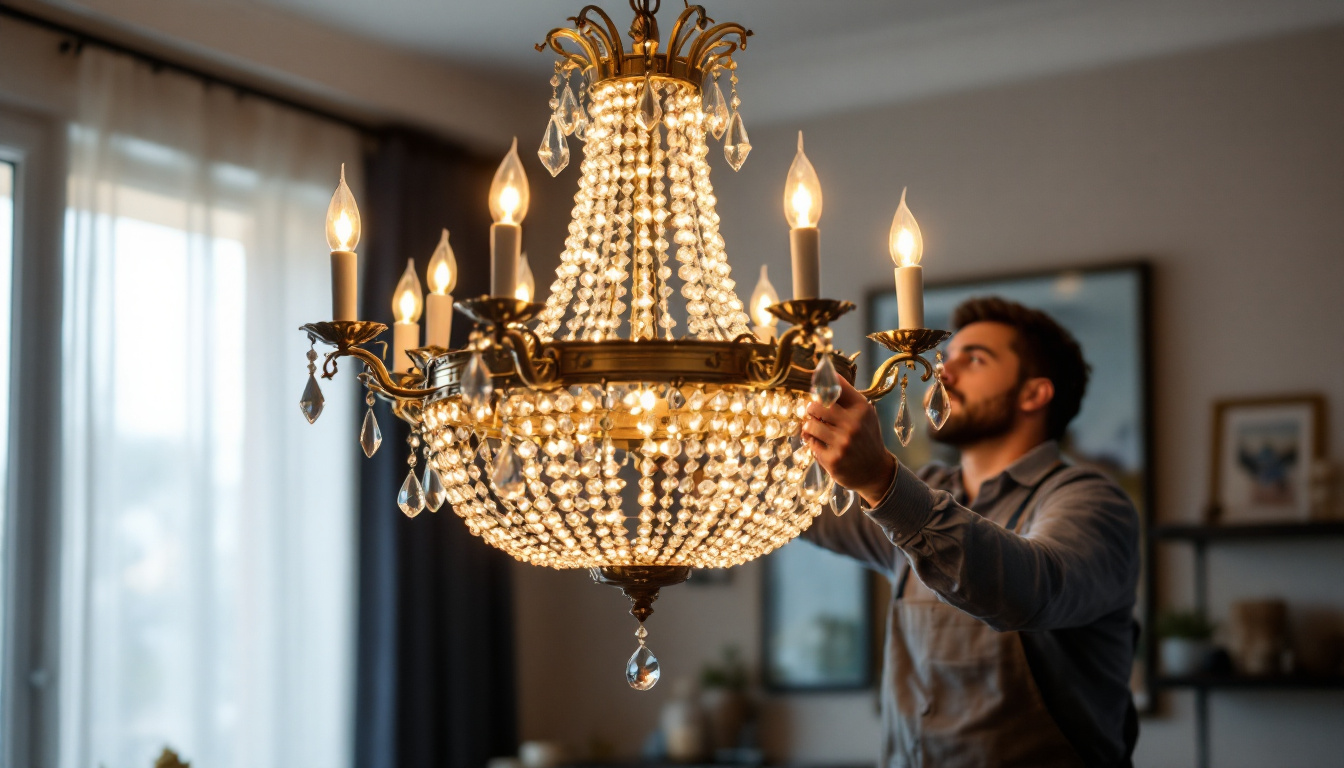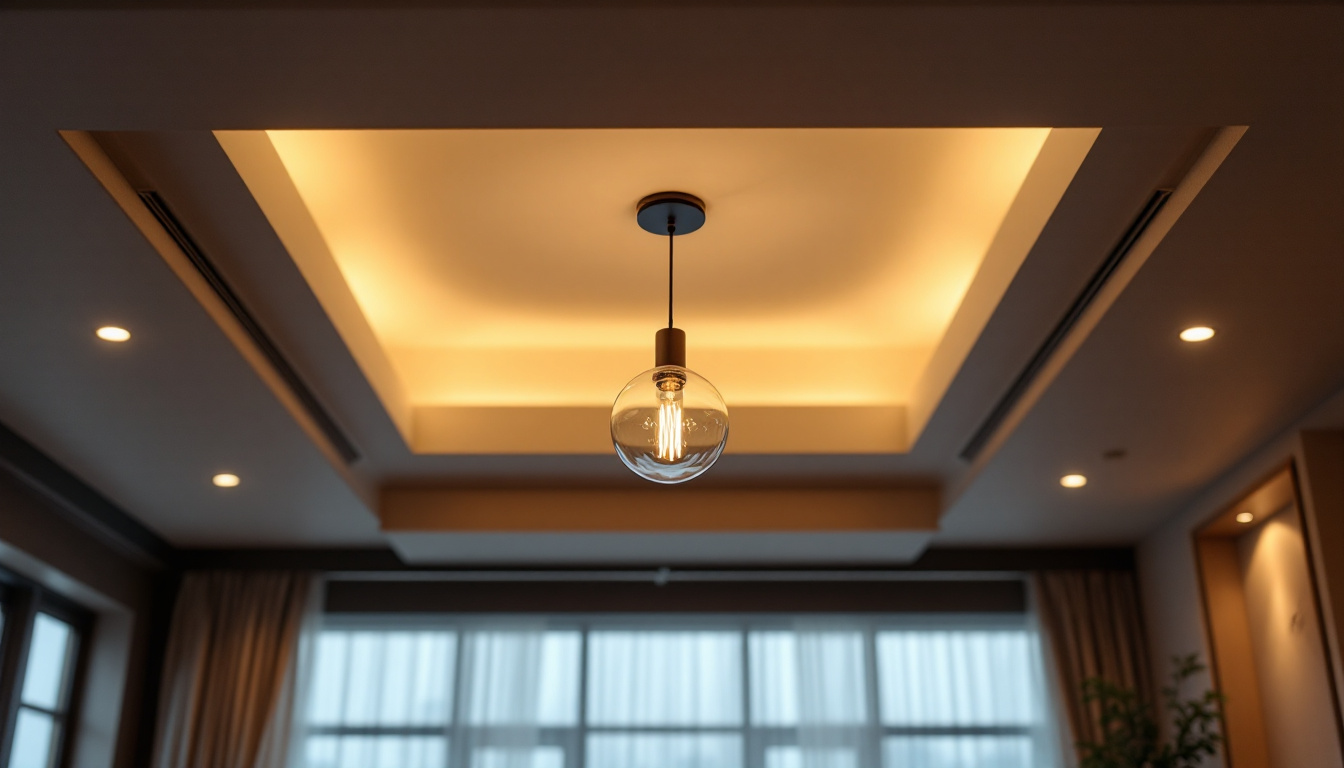
In the realm of interior design and architecture, chandeliers have long been regarded as a symbol of elegance and sophistication. For lighting contractors, understanding the intricacies of chandeliers is essential, not only for installation but also for advising clients on the best options for their spaces. This article delves into the various aspects of chandeliers, from types and styles to installation techniques and maintenance, providing valuable insights for lighting professionals.
Chandeliers are decorative lighting fixtures that are often suspended from ceilings, serving both functional and aesthetic purposes. They come in a variety of styles, sizes, and materials, making them suitable for different environments, from grand ballrooms to cozy dining rooms. A well-chosen chandelier can transform a space, adding character and charm.
Chandeliers can be categorized into several types based on their design and functionality. The most common types include:
Each type of chandelier serves a unique purpose and can dramatically influence the atmosphere of a room. As a lighting contractor, recognizing these distinctions can help in making informed recommendations to clients. Additionally, the choice of chandelier can also reflect personal style and preferences, making it an important aspect of interior design.
Beyond the basic types, chandeliers come in an array of styles that cater to various tastes and interior designs. From the classic elegance of a crystal chandelier to the industrial vibe of a metal fixture, the style of a chandelier should align with the overall decor of the space.
For instance, a vintage chandelier may complement a traditional home, while a geometric design could enhance a modern loft. Understanding the nuances of these styles allows lighting contractors to provide tailored solutions that resonate with clients’ preferences. Furthermore, the finish of a chandelier—whether polished, matte, or distressed—can also play a significant role in how it integrates with the surrounding decor, influencing the overall ambiance of the room.
Another important consideration is the size of the chandelier in relation to the space it occupies. A grand chandelier can serve as a stunning focal point in a large foyer, while a smaller, more delicate fixture may be more appropriate for intimate dining areas. The height at which a chandelier is hung is equally crucial; it should be positioned to allow for comfortable movement beneath it while still providing ample illumination. By paying attention to these details, lighting contractors can ensure that each chandelier not only enhances the aesthetic appeal of a space but also serves its practical purpose effectively.
When selecting a chandelier, several factors must be considered to ensure it meets both aesthetic and functional requirements. Lighting contractors play a crucial role in guiding clients through this decision-making process.
One of the most critical aspects of choosing a chandelier is its size. A chandelier that is too small can appear insignificant, while one that is too large may overwhelm a room. To determine the appropriate size, contractors can use a simple formula: add the room’s length and width in feet, then convert that number to inches. This will give a rough estimate of the chandelier’s diameter.
Additionally, the height at which the chandelier is hung should be considered. In dining areas, for example, it is generally recommended to hang the chandelier 30 to 36 inches above the table. In entryways, a higher placement may be appropriate to allow for clearance. It’s also essential to factor in the ceiling height; a room with a higher ceiling may benefit from a longer chandelier or a multi-tiered design that draws the eye upward, enhancing the sense of space.
Understanding the lighting needs of a space is equally important. Chandeliers can provide ambient, task, or accent lighting, depending on their placement and design. For instance, a chandelier in a dining room should provide sufficient light for meals, while one in a foyer may serve as an eye-catching focal point.
Contractors should also consider the type of bulbs used in the chandelier. LED bulbs are energy-efficient and long-lasting, making them a popular choice. However, the color temperature of the bulbs can affect the ambiance; warm white bulbs create a cozy atmosphere, while cooler tones can offer a more modern feel. Furthermore, dimmable options can enhance versatility, allowing homeowners to adjust the brightness based on the occasion, whether it’s a formal dinner party or a casual family gathering. The ability to control lighting not only adds functionality but also contributes to the overall mood of the space.
Another consideration is the style of the chandelier, which should harmonize with the existing decor. From traditional crystal designs that evoke elegance to sleek, contemporary fixtures that embody minimalism, the chandelier can serve as a statement piece or a subtle complement to the room’s aesthetic. It’s also worth exploring various materials, such as wrought iron, glass, or even natural elements like wood, to find a chandelier that resonates with the homeowner’s personal style and the overall theme of the space.
Installing a chandelier requires careful planning and execution. As a lighting contractor, understanding the technical aspects of installation can ensure a safe and successful project.
Before installation, it is essential to assess the electrical requirements of the chandelier. This includes checking the wattage and ensuring that the existing wiring can support the new fixture. In some cases, upgrading the electrical system may be necessary to accommodate the chandelier’s power needs.
Furthermore, ensuring that the mounting hardware is secure is vital. Chandeliers can be heavy, and proper support is necessary to prevent accidents. Using a ceiling box rated for the weight of the chandelier is a best practice that should not be overlooked.
Safety should always be a top priority during installation. Contractors should ensure that the power is turned off at the circuit breaker before beginning work. Using appropriate tools and wearing safety gear can prevent accidents and injuries.
Additionally, it is advisable to have a second person assist with the installation, especially for larger chandeliers. This not only makes the process easier but also enhances safety, as one person can hold the fixture while the other secures it in place.
Once a chandelier is installed, regular maintenance is essential to preserve its beauty and functionality. Lighting contractors can provide valuable guidance on how clients can care for their fixtures.
Over time, dust and grime can accumulate on chandeliers, dulling their shine. Cleaning methods vary depending on the chandelier’s materials. For crystal chandeliers, a gentle solution of warm water and mild soap is often effective. Using a soft cloth or a feather duster can help avoid scratches.
For metal chandeliers, a specialized metal cleaner may be necessary to maintain their luster. It is important to follow the manufacturer’s recommendations to avoid damaging the finish.
Regularly checking and replacing bulbs is crucial for maintaining optimal lighting. Contractors should advise clients to keep spare bulbs on hand, particularly if the chandelier uses a specific type that may not be readily available. Additionally, discussing the importance of using bulbs with the correct wattage can prevent overheating and prolong the life of the fixture.
The world of chandelier design is ever-evolving, with new trends emerging that reflect contemporary tastes and technological advancements. Staying informed about these trends can help lighting contractors provide innovative solutions to their clients.
With the rise of smart home technology, many chandeliers are now equipped with smart features. These fixtures can be controlled via smartphone apps or voice-activated devices, allowing homeowners to adjust brightness and color temperature with ease. Contractors should familiarize themselves with these products to offer clients cutting-edge options.
Smart chandeliers also often come with energy-efficient LED bulbs, making them an attractive choice for environmentally conscious consumers.
Another trend gaining popularity is the use of mixed materials in chandelier design. Combining elements such as wood, metal, and glass can create visually striking fixtures that stand out. This trend allows for greater customization, enabling contractors to suggest unique designs that align with clients’ personal styles.
Chandeliers are more than just light fixtures; they are statement pieces that can elevate the aesthetic of any space. For lighting contractors, understanding the various types, styles, and installation techniques is crucial for providing exceptional service to clients. By staying informed about trends and maintenance practices, contractors can ensure that their clients enjoy the beauty and functionality of their chandeliers for years to come.
In summary, chandeliers offer a unique blend of artistry and utility, making them a valuable addition to any interior design project. With the right knowledge and expertise, lighting contractors can guide their clients in selecting, installing, and maintaining these exquisite fixtures, ultimately enhancing the overall ambiance of their homes and businesses.
Ready to elevate your lighting projects with the finest chandeliers and fixtures? Look no further than LumenWholesale, where we provide lighting contractors with exceptional, spec-grade lighting products at the most competitive wholesale prices. Say goodbye to local distributor markups and hello to a vast selection of industry-standard lighting that promises reliability and high performance for every space. Enjoy the convenience of bulk buying with free shipping and no hidden fees. Make your next project shine with quality, affordability, and convenience at LumenWholesale. Discover our collection and secure the best value in wholesale lighting by visiting Wholesale Lighting at the Best Value.

Discover why lighting contractors should prioritize exterior house light fixtures in their projects.

Discover the essential checklist for lighting contractors focusing on LED fridge lights.

Discover how LED 4ft shop lights are revolutionizing modern lighting solutions with energy efficiency, durability, and superior illumination.

Discover why lighting contractors should prioritize dining room ceiling lights in their projects.